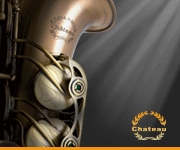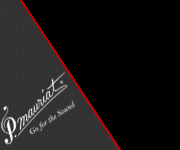 Forgot Username? Forgot Password?
Forgot Username? Forgot Password?
 SELMER Super - Radio Improved (1934-1936)
SELMER Super - Radio Improved (1934-1936)
Selmer Paris introduced the Super Series around 1931. These horns are easily differentiated from the earlier “New Large Bore” model because they are clearly stamped SSS (Selmer Super Sax) on the bell. There are basically three versions of this horn.
The first is know as the Cigar Cutter. This was just a nickname and was never the official name of the sax. It was called so because the the octave key mechanism resembled an old-time cigar cutter, simple as that. Selmer ads at the time hyped that these horns had the “Largest Bore and Fullest, Richest Tone of any [Alto] Saxophone made.”
After a couple years, changes to the horn dropped the cigar cutter-like octave key, in favor for a new assembly that was a rocker style, very similar to the same style used today. This model was still marketed as the Super series, and today is known simply as the “Super”.
At the end of the run, around 1934, Selmer changed it again. The new horn in the Super line was the Radio Improved. This one is clearly stamped “Radio Improved” on the bell, and again has some minor keywork differences. Selmer Paris's website says this horn was “created for radio sound-takes and studio recordings.” Less than 2000 of these were produced, and the few out there are still very popular to this day.
[less]Selmer Paris introduced the Super Series around 1931. These horns are easily differentiated from the earlier “New Large Bore” model because they are clearly stamped SSS (Selmer Super Sax) on the bell. There are basically three versions of this horn.
The first is... [more]
Serial Numbers:
| Beginning Year | Beginning Number |
|---|---|
| 1934 | 18701 |







